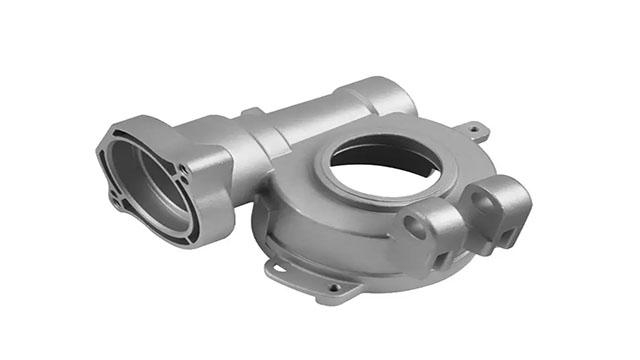BETTER TOUCH BETTER BUSINESS
Contact Sales at Lori.
Zinc alloy has excellent casting properties, mechanical properties and toughness. It is widely used in the traditional product machinery parts, hardware parts, locks, toys and other industries. Zinc alloy also has excellent thermal conductivity, excellent vibration damping characteristics and excellent electromagnetic shielding performance. Therefore, its application of electronics, telecommunications and home appliances continues to grow, especially the necessary electromagnetic shielding target electronic products.

First, how to choose good zinc alloys?
The good zinc alloys must have the following three characteristics:
1. High purity: zinc ingot impurity content is low: high purity zinc material as the base, such as high-quality 0# zinc ingot.
2. Low melting point: good zinc alloys melting point control at 380-390℃. The crucible temperature can be controlled below 420℃.
3. Less zinc slag: when melting, less zinc slag is produced.
Second, is the "home-made" zinc alloy material really "home-made"?
1. Zinc alloy die-casting melting point is high, and it will crush the identity of zinc alloy die-casting. When the crucible temperature exceeds 420 ° C, the magnesium and aluminum in the zinc alloy will be consumed, the identity of the alloy will be changed, the quality of the product will be affected, and the scrap rate will increase.
2. Zinc alloy die-casting melting point is high, and it can cost capital.
Usually in the production process, the set temperature of zinc alloy die casting is 410 ° C, and the difference of zinc alloy is probably necessary to be set above 430 ° C. An 88T zinc alloy die-casting machine at home in Shenzhen zinc alloy die-casting factory is taken as an example: the temperature is raised by 10 ° C, and the annual electricity consumption increases by 5,000 yuan, such as the use of diesel oil, and the consumption increases by about 8,000 yuan.
3. Zinc alloy die-casting melting point is high, and the hot work life is eliminated.
The normal crucible temperature should be about 410℃. If the temperature is too high, it will accelerate the wear and corrosion of the hammer handle, hammer handle, steel, gooseneck, and crucible, and it will get stuck and die. Take gooseneck as an example: a good gooseneck is usually about 5,000 yuan. As a normal gooseneck service life is usually more than 1.5 million molds, if the alloy corrosion of the gooseneck is severe, the production of 1 million molds will probably make its production problems. Severely, it may be directly scrapped, and the cost will increase significantly.
4. Zinc alloy material melting point is high, and the mold life is eliminated.
The melting point of zinc alloy material increases, the damage to the mold is extensive. The service life of the mold will be eliminated, and the corrosion of the mold will be intensified. The life of the mold will shrink, and the cost of each mold product will be improved.

The melting of zinc alloy is an important part of the die casting process. The melting process is not only to obtain molten metal liquid, but more importantly, it gets the chemical composition to comply with the regulations. The zinc alloy die casting can obtain good crystalline structure and gas. The correct zinc alloy die casting process is an important guarantee to obtain high quality castings.
First, the best melting temperature of zinc alloy die-casting: the melting point of zinc alloy die-casting is 382~386℃, and the appropriate temperature and height control are the important factors in the control of zinc alloy composition. In order to ensure the good flow of alloy liquid filling cavity, the metal liquid temperature in the zinc pan of the die-casting machine is 415~430℃, and the die-casting temperature of thin-walled parts and complex parts can be upper limit. Thick wall parts, simple parts can be lower limit. The temperature of molten metal in the central melting furnace is 430~450℃. The temperature of the liquid metal entering the gooseneck tube is basically the same as the temperature inside the zinc pan. The casting temperature can be accurately controlled by controlling the metal liquid temperature of zinc pot.
Second, (when the melting temperature is too high) the reaction between the iron crucible and the zinc liquid is accelerated, and the oxidation of iron on the surface of the crucible produces Fe2O3 and other oxides. The iron also reacts with the zinc solution to form the compound FeZn13 (zinc slag), which is dissolved in the zinc solution, and the aluminum and magnesium are burning.
The metal oxidation rate increases, the burning loss increases, and the zinc slag increases. Thermal expansion will cause the phenomenon of stuck hammer. More iron is fused into the alloy in the cast iron crucible, and the reaction between zinc and iron is accelerated at high temperature. Hard particles of iron-aluminum intermetallic compounds will be formed, causing excessive wear of the hammer head and gooseneck. More iron is fused into the alloy in the cast iron crucible, and the reaction between zinc and iron is accelerated at high temperature. Hard particles of iron-aluminum intermetallic compounds will be formed, causing excessive wear of the hammer head and gooseneck. Fuel consumption increases accordingly. The higher the temperature, the larger the crystallization of the casting and the lower the mechanical properties.
Copyright © 2025 Shenzhen Lori Technology Co.Ltd. | All Rights Reserved.